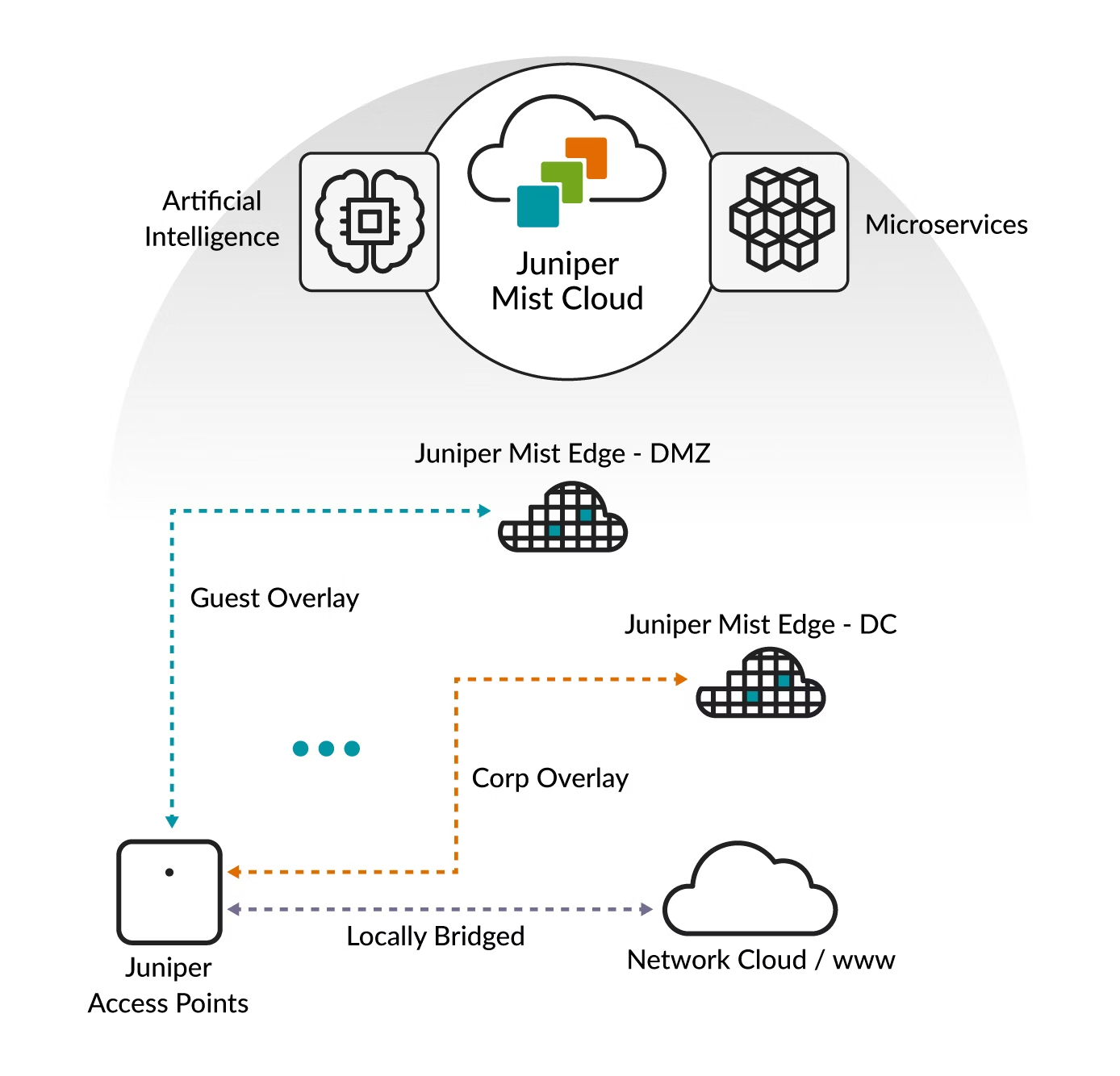Blogs
I have children, NSW Health has data.
A recent ED trip with one of the kids revealed a surprisingly accurate triage wait-time counter. I expected a feel-good dummy number — but nope, it actually worked.
Read More

The Juniper Mist™ Edge solution combines the power of the Juniper Mist™ cloud with a smart, distributed software setup to make managing, troubleshooting, and analysing your network a breeze. It extends key services right to your location while still taking advantage of everything the cloud has to offer. With the Juniper Mist Edge appliance, you get the best of both worlds—splitting management between the cloud and your on-site network. Plus, it’s super flexible, with different models available to fit any size deployment
The Juniper Mist Edge solution offers the following features:
Here’s a breakdown of its key functions:
1. On-Premises Extension of the Mist Cloud: While Mist primarily operates from the cloud, Mist Edge allows critical services to run locally on-premises. This is useful in scenarios where you need low-latency access to certain services or when there are concerns about cloud connectivity.
2. Enhanced Security and Compliance: By processing sensitive data locally, Mist Edge can help organisations meet specific security or regulatory compliance requirements.
3. Scalability and Reliability: Mist Edge helps in scaling the deployment of Mist access points by offloading certain tasks from the cloud to the local edge, ensuring high availability and reliability even in cases of temporary loss of cloud connectivity.
The following are some of the typical use cases for a Juniper Mist Edge deployment:
With tunneling microservice, you can seamlessly transition from the existing centralised data plane with legacy controller architectures to the modern Juniper Mist microservices cloud architecture. This transition does not affect the existing network architecture. The access points (APs) leverage standards-based L2TPv3 technology to tunnel VLAN traffic to and from the Juniper Mist Edge for selected wireless LANs (WLANs).
When you deploy Juniper Mist Edge, your network can support both locally bridged and tunneled WLANs. The service also supports seamless mobility for devices running latency-sensitive applications, allowing them to maintain performance as they roam across the campus. A Juniper Mist Edge cluster will operate intelligently to deliver scalable and reliable performance by optimising broadcast and multicast traffic delivery. Configuration of the tunnels is also simplified through the power of the Juniper Mist cloud and its zero-touch provisioning capabilities.
The Juniper Mist microservices architecture provides the flexibility to form multiple tunnels to different Juniper Mist Edge appliances to meet the wireless configuration requirements. A Juniper Mist Edge deployment can support both locally bridged and tunneled WLANs. For example, you can:
With SSID tunneling, the Juniper Mist Edge solution can access corporate resources.

Juniper Mist Edge supports an elastically scalable cluster that has an unlimited number of nodes. The support also extends to backup clusters. The Juniper Mist Edge cluster design for the tunneling microservice supports optimising the aggregate capacity for APs and clients. The cluster design also supports meeting throughput expectations.
In case of a catastrophic network failure, Juniper Mist Edge supports multiple layers of redundancy to ensure WLAN survivability. If an entire cluster goes offline within a DC, Juniper Access Points can fail over to a different cluster hosted in a different DC to ensure network survivability.
The switch proxy service in Juniper Mist™ Edge enables you to proxy all the data packets received from the Juniper EX series switches to the Juniper Mist™ cloud. You can benefit from this service when switches are behind an HTTP proxy or a firewall with port 2200 blocked. If a firewall exists between the Juniper Mist Edge device and the switch, you need to allow outbound access on TCP port 2222 (configurable) to the management port of the switch.
Blogs
A recent ED trip with one of the kids revealed a surprisingly accurate triage wait-time counter. I expected a feel-good dummy number — but nope, it actually worked.
Read More
Technical
Whether you're just stepping into the world of monitoring or you've been staring at Zabbix dashboards for years, it helps to understand how all the pieces fit together. Zabbix relies on a few key components—like servers, agents, and proxies—to keep an eye on your environment. Here's a quick...
Read More
Technical
When it comes to IT visibility, Zabbix is one of the most powerful open-source monitoring platforms available. But to truly understand how it keeps your infrastructure running smoothly, it helps to know the building blocks that make it work: Hosts, Items, and Triggers.
Read More